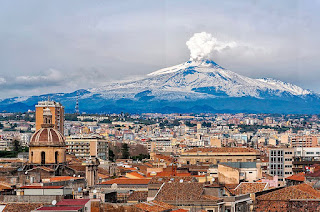Galeazzo Alessi – architect
Brilliant designer left legacy of beautiful palaces and churches
Italian architect Galeazzo Alessi, who designed some of the most impressive buildings in Genoa and Assisi, died on this day in 1572. Born in Perugia in 1512, Alessi studied drawing for both civil and military architecture and developed great enthusiasm for ancient architecture, although he was also later influenced by Michelangelo. He became known throughout Europe for his distinctive style and towards the end of his career was commissioned to design churches and palaces in France, Germany, Belgium and Spain. A lot of his work can still be seen in Perugia and Assisi, where, in collaboration with another architect, Alessi designed the Basilica of Santa Maria degli Angeli in 1568. In Genoa he designed some of the beautiful palaces with ornate decoration that have now been listed as Unesco world heritage sites and he was involved in planning the lay-out of the streets and the restoration of the city walls. Alessi died at the age of 60 in Perugia before the designs that he had drawn up for El Escorial, the residence of the King of Spain, could be carried out. Perugia, Alessi’s home town, is the capital city of the region of Umbria and one of the main Etruscan cities of Italy. Read more…
_________________________________________
Titus – Roman Emperor
'Good' ruler who helped victims of Vesuvius eruption
The Roman Emperor Titus was born Titus Flavius Vespasianus on this day in AD 39. He was Emperor from AD 79 to 81 and is remembered for capturing Jerusalem and for completing the Colosseum in Rome. Two months after his accession, on August 24, AD 79, Mount Vesuvius in Campania began erupting, eventually killing thousands of people around Pompeii and Herculaneum. Titus appointed officials to coordinate the relief effort, while donating large amounts of money from the imperial treasury to aid the victims. He visited Pompeii twice. Titus was a member of the Flavian dynasty and succeeded his father Vespasian after his death, becoming the first Roman emperor to come to the throne after his biological father. Titus was believed to have been born in Rome on December 30, AD 39, the eldest son of Titus Flavius Vespasianus, who was commonly known as Vespasian. His father had earned prestige as a military commander, taking part in the invasion of Britain in AD 43 under the emperor Claudius. Titus served under his father in Judea during the first Jewish-Roman war. Read more…
__________________________________________
Alessandra Mussolini – politician
Controversial granddaughter of Fascist dictator
The MEP Alessandra Mussolini, niece of actress Sophia Loren and granddaughter of Italy’s former Fascist dictator Benito Mussolini, was born on this day in 1962 in Rome. Formerly an actress and model, Mussolini entered politics in the early 1990s as a member of the neofascist Movimento Sociale Italiano, which had its roots in the Italian Social Republic, the German puppet state led by her grandfather from September 1943 until his death in April 1945. Her views have changed in more recent years and she has become known for embracing modern issues including abortion, artificial insemination, gay rights and civil unions from a progressive standpoint that has more in common with left-wing feminism. She has left behind her association with the far right and serves on the European Parliament as representative for Central Italy under a centre-right Forza Italia ticket. However, she is not without some admiration for the policies of her grandfather. Only recently she caused consternation when asked her opinion on what to do about an escalating Mafia war in the Roman seaside resort of Ostia by claiming that “granddad would have sorted this out in two or three months.” Read more…
________________________________________
Camila Giorgi - tennis player
Italian who specialises in beating big names
The tennis player Camila Giorgi was born on this day in 1991 in Macerata, a city in the Marche region. Giorgi rose to 26 in the Women’s Tennis Association world rankings at the end of 2018, at which time there was no other Italian woman in the top 100. This followed a breakthrough year for Giorgi in which she reached the quarter-finals of a Grand Slam event for the first time, at the Wimbledon Championships in London in June. Giorgi was not seeded but after defeating 21st seed Anastasija Sevastova in the first round, she advanced through her section of the draw with three more victories, culminating in a straight-sets win over former world No 8 Ekaterina Makarova in the fourth round. That earned Giorgi a last-eight meeting with seven-times Wimbledon champion and world record grand slam winner Serena Williams. Giorgi won the first set but Williams fought back to win the match. Earlier in the 2018 summer, Giorgi had delivered her best performance at the French Open by reaching the third round. Later in the year, she won her second career WTA tournament, the Linz Open in Austria. Read more…
.jpg)
.jpg)


.jpg)

_-_DSC05924.JPG)

.jpg)
.jpg)

.jpg)





_2%20(2).jpg)
.jpg)
.jpg)